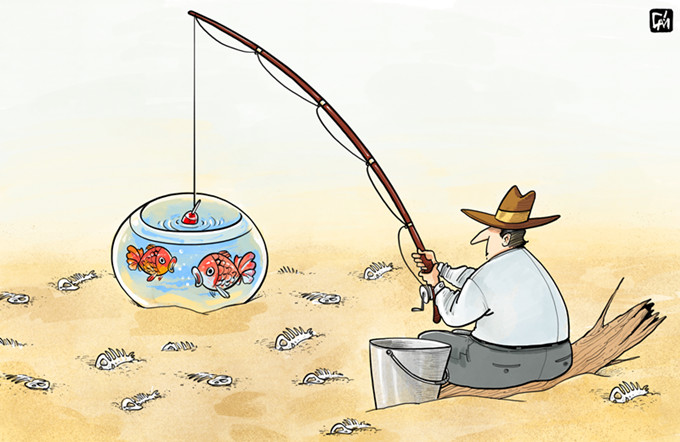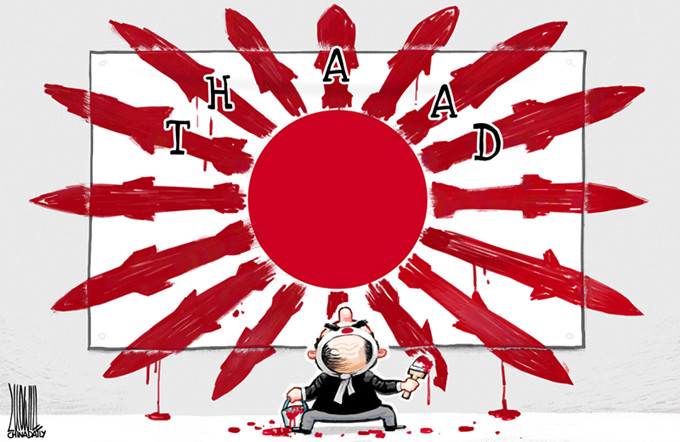Avoid fiscal risks of fixed-asset investment
 |
|
A potential homebuyer checks out a property project in Hangzhou, Zhejiang province, Dec 17, 2016. [Asianewsphoto by Long Wei] |
The fixed-asset investment in 23 provinces, municipalities and autonomous regions (excluding agricultural households) is expected to increase to more than 45 trillion yuan ($6.52 trillion) in 2017, raising public concerns.
Some people have even inappropriately compared the fixed-asset investment with the 4 trillion yuan stimulation package in 2008. The fact is, the government had allocated 4 trillion yuan as extra investment to offset the impact of the global financial crisis and stimulate the economy, and the amount was far less than the total social fixed-asset investment. For example, China's annual social overall fixed-asset investment reached 45 trillion yuan in 2013, rising to 50 trillion yuan in 2014, 56 trillion yuan in 2015 and about 60 trillion yuan last year.
Based on last year's growth rate of fixed-asset investment, the overall amount for this year is expected to be about 65 trillion yuan. Thus the 45 trillion yuan fixed-asset investment of the 23 provinces, municipalities and autonomous regions is in accordance with the growth tendency of such investment in recent years.
That people are surprised to see even reasonable economic data shows their concern about local government debt. Although provincial-level governments can generally manage their local debts, some can encounter risks. So if a province or region faces a shortage of pension payment funds, it should be alert to financial risks.
Besides, people should understand that government funds do not account for the entire amount of fixed-asset investment; a considerable amount actually comprises social investment. Private investment declined sharply last year because of some economic factors, including periodical and structural adjustments. And reducing costs is one of the key tasks of the supply-side structural reform, which is expected to promote private investment.
Since government debts in some regions are the result of debt replacement and past accumulation of debts, the total debts signify the cumulative financial risk of the few past years. Also, local governments' special debt is included in the government-managed fund, which mainly consists of income from the transfer of rights to use State-owned land. Last year, the income from the transfer of such rights was 3.74 trillion yuan, up 15.1 percent year-on-year, which accounted for 88 percent of the local government-managed fund (4.24 trillion yuan).
In some regions the income from transfer of State-owned land use rights declined sharply, which was partly responsible for the increase in local government debt.
Investment should be facilitated and promoted, as President Xi Jinping said during a panel discussion with lawmakers from Shanghai at the annual session of China's top legislature last month. But the scale of local government investment should be strictly controlled, and the central government must provide necessary support for local governments so that they can meet their capital shortage in order to deliver public services and public goods.
Moreover, the market should be allowed to play a decisive role in resource distribution, and as private investments are of great significance to macroeconomic stabilization and local economic development, proper channels should be created to attract them to local projects. For instance, the public-private partnership is a significant financing channel for local governments' fixed-asset investment.
According to Ministry of Finance data, PPP projects across the country saw rapid growth last year, when 11,260 PPP projects were registered with a cumulative investment of 13.5 trillion yuan. And since large scale fixed-asset investment is expected to be made in local areas through PPPs this year, local governments should properly weigh the risks of both local government debt and PPP in order to avoid fiscal risks.
The author is a research fellow at the National Academy of Economic Strategy, Chinese Academy of Social Sciences.
- Supervision of outbound investment must be maintained to plug loopholes
- More sectors to open up for private investment
- China to increase investment in artificial intelligence
- Trade disputes 'would not alter' investment deal
- Wuxi investment sets sail for Southeast Asia
- China's infrastructure investment key to Africa's development needs: UN official
























